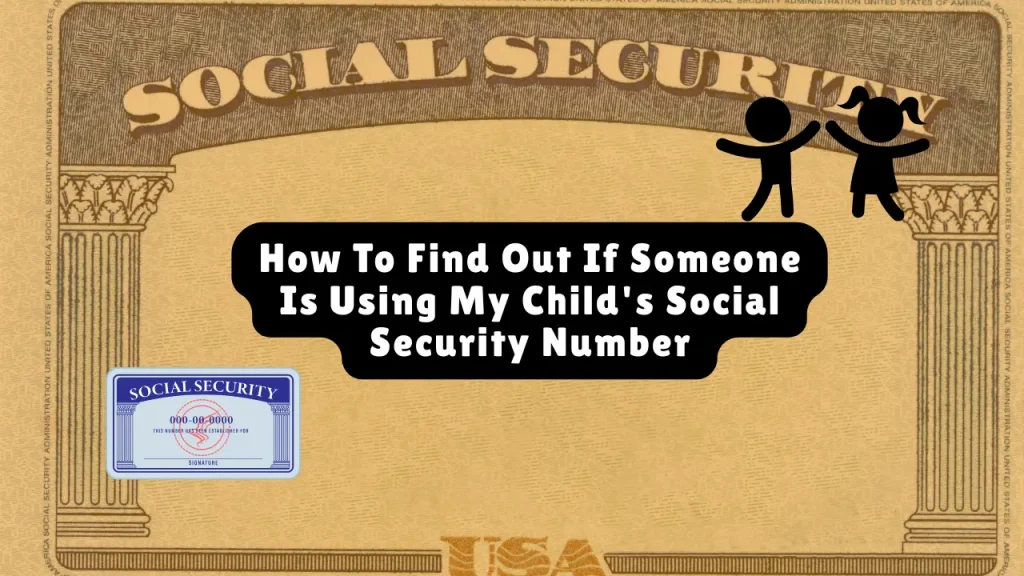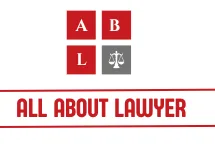How To Find Out If Someone Is Using My Child’s Social Security Number?
Child identity theft is a growing but often hidden crisis. According to Javelin Strategy & Research, over 1.25 million children in the U.S. were victims of identity theft in 2020 alone. The FTC also received more than 22,000 reports of child identity theft last year. Many of these young victims only discover the damage years later—when applying for student loans, jobs, or housing—only to find their credit tarnished or their SSN linked to criminal or tax issues.
This guide walks you through how to check if someone is using your child’s Social Security Number (SSN), what to do if fraud is confirmed, and how to prevent it.
Table of Contents
Why Thieves Target Children’s SSNs
Children’s SSNs are appealing to identity thieves because they are typically “clean”—unused and unmonitored for years. A fraudster can exploit this clean slate to open credit cards, apply for loans, file fraudulent tax returns, obtain medical services, or even commit crimes under your child’s name.
Warning Signs Your Child’s SSN May Be Compromised
1. Unusual Mail or Calls
- Pre-approved credit offers, debt collection letters, or bills in your child’s name.
- IRS notifications about unpaid taxes or income your child didn’t earn.
- Medical bills for procedures your child never received.
2. Denied Government Benefits or Accounts
- Your child is rejected for student loans, government aid, or bank accounts due to a credit file already existing.
3. Existing Credit Report
Children under 18 typically should not have a credit report. If one exists, it is a red flag that their SSN has been used fraudulently.
Step-by-Step: How to Investigate Misuse of Your Child’s SSN
1. Check Credit Bureaus for a Credit File
1.1 Request a Credit Report
- Contact all three major bureaus (Equifax, Experian, TransUnion) via phone and submit written requests.
- Use resources like the California DOJ sample letters to inquire or request a fraud alert.
- For a formal freeze, provide:
- Your child’s birth certificate and SSN.
- Proof of guardianship.
- Your government-issued ID.
- Your child’s birth certificate and SSN.
1.2 TransUnion’s Child Identity Theft Inquiry
Use their dedicated online form to check for a credit file or place a minor freeze, even if no file currently exists.
2. Verify IRS Records
2.1 Request Wage Transcripts
- Call the IRS at 800-908-4490 to check if a tax return or W-2 was filed under your child’s SSN.
- You can also request Form W-2 or tax transcripts to review earnings history.
2.2 File IRS Identity Theft Affidavit
If fraud is suspected, file IRS Form 14039. The IRS may assign your child an Identity Protection PIN (IP PIN) to prevent future misuse.
Related article: How to Tell If Someone Is Using Your Social Security Number (SSN )

3. Check SSA Records for Unauthorized Earnings
3.1 Review Social Security Earnings
- Create or log in to your my Social Security account to access your child’s Statement of Earnings.
- Report unauthorized income to the SSA’s Office of the Inspector General.
3.2 Submit Correction Request
Mail a detailed letter to the SSA fraud unit, including:
- Child’s SSN.
- Dates and amounts of fraudulent earnings.
- Billing notices or police report numbers.
4. Investigate Healthcare and Benefit Claims
- Contact your state Medicaid office and private insurers to ask if any claims or enrollments exist under your child’s SSN.
- Provide:
- Your ID.
- Child’s SSN.
- Proof of guardianship.
- A police report number (if available).
- Your ID.
- Use template letters to compel full disclosure.
5. Monitor the Dark Web
Use monitoring tools like:
- Aura
- LifeLock
- Have I Been Pwned
- IdentityIQ
These services scan for your child’s SSN, date of birth, and email addresses in known breaches and the dark web.
Expert Insight:
Michael Bruemmer, Vice President at Experian, advises:
“Freezing your child’s credit is the most effective shield. Pair this with annual credit checks and dark web monitoring to stay ahead of threats.”
What to Do If Fraud Is Confirmed
1. File Official Reports
- Federal Trade Commission (FTC): File at IdentityTheft.gov to create a recovery plan and receive an affidavit.
- Local Police: Provide the FTC affidavit and supporting documentation.
2. Dispute Fraudulent Accounts
- Contact each creditor to close unauthorized accounts.
- Request written confirmation stating your child isn’t liable.
- Submit the FTC’s Uniform Minor’s Status Declaration to credit bureaus.
3. Freeze Your Child’s Credit
Initiate a permanent freeze with each bureau:
- Equifax: Freeze portal
- Experian: Freeze portal
- TransUnion: Freeze portal
Legal Help and Advocacy Resources
- IDShield and Aura offer professional recovery services and legal coverage (up to $1 million).
- Identity Theft Resource Center (ITRC): Offers free legal referrals, victim support, and educational tools.
- State Attorney General Programs: California, Florida, and Georgia offer detailed guidance and forms to assist with child ID theft recovery.
Proactive Measures to Prevent Child Identity Theft
1. Limit SSN Sharing
Avoid providing your child’s SSN to schools, doctors, or clubs unless absolutely necessary. Use only the last four digits or ask for alternative identifiers.
2. Shred Sensitive Documents
Use a cross-cut shredder to destroy mail, medical records, and school documents containing your child’s SSN.
3. Educate Your Child
Teach kids to never share personal details online. Set up parental controls, monitor social media, and discuss phishing scams and data breaches.
4. Annual Monitoring
- Use AnnualCreditReport.com (call 877-322-8228 to speak to an agent for minors).
- Consider paid monitoring plans like LifeLock for real-time updates across all bureaus.
Real-Life Cases
- Axton Betz-Hamilton discovered at 19 that her mother used her SSN to open fraudulent accounts for over a decade, damaging her credit.
- A Texas family found out their 7-year-old’s SSN had been used to open a utility account. A credit freeze and help from TransUnion resolved the case in two weeks.
Final Takeaway
Detecting child identity theft early is vital. Combine annual credit checks, IRS and SSA monitoring, healthcare inquiries, and dark web scans with a credit freeze to shield your child’s financial future. As cybercrime and data breaches increase, parental vigilance is no longer optional—it’s essential.
Take action today to protect your child’s clean slate. For recovery steps and additional resources, visit:
- IdentityTheft.gov
- SSA Fraud Reporting
- IRS Identity Theft Central
- Aura Identity Protection
About the Author

Sarah Klein, JD, is a former consumer rights attorney who spent years helping clients with issues like unfair billing, product disputes, and debt collection practices. At All About Lawyer, she simplifies consumer protection laws so readers can defend their rights and resolve problems with confidence.
Read more about Sarah
